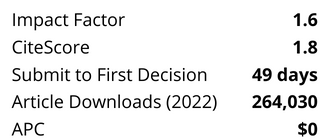An advanced water treatment system was introduced at the Osaka Municipal Water Works Bureau in March 2000. This system incorporates ozonation and a granular activated carbon (GAC) process into conventional treatment processes, improving tap water quality.
The GAC process is the last stage of the process, and it can effectively remove trihalomethane precursors and other toxic organic substances. GAC treats water through a physical adsorption effect inherent in the GAC itself, and an effect by the microorganisms in the GAC layer (called the biological activated carbon (BAC) effect). Sparse reports on long-term changes in the BAC effect make it very difficult to determine the replacement period for BAC.
A long-term study of BAC water treatment performance, physical characteristics, and other factors was conducted in Osaka City in order to decide upon BAC replacement standards. 48 water quality items were checked at a demonstration plant and with an experimental device. Three patterns of deterioration in BAC water treatment performance were identified.
Physical properties of BAC (5 items including adsorption capacity and hardness) were also studied, and no significant correlation with water treatment performance was found. An optimal BAC replacement standard was decided upon from this and other factors (costs, environmental influence, etc.).




%20cropped.png?versionId=5954)